Sabo Sez: Promoting Doom
By Walter Sabo
a.k.a. Walter M Sterling
Host, Sterling Every Damn Night
WPHT, Philadelphia
Sterling On Sunday, Syndicated, TMN
 During my tenure at NBC, once a month the division heads would meet at the behest of the CEO to report on their progress and trends in their sector. As the executive vice president of the FM division, I took a seat in that formidable group and tried to keep my remarks as brief as possible. What could I possibly say that would be more damn important than the words of the president of NBC News or the NBC Television network? In addition to NBC’s CEO, the CEO of owner RCA would often join the fun.
During my tenure at NBC, once a month the division heads would meet at the behest of the CEO to report on their progress and trends in their sector. As the executive vice president of the FM division, I took a seat in that formidable group and tried to keep my remarks as brief as possible. What could I possibly say that would be more damn important than the words of the president of NBC News or the NBC Television network? In addition to NBC’s CEO, the CEO of owner RCA would often join the fun.
Cable TV was flourishing, and CNN had just launched. I was at least 15 years younger than everyone in that meeting and had a different perspective on cable. Therefore, I was shocked by this exchange:
The CEO asked the president of NBC News what he thought of CNN. The President of NEWS said these exact words:
“It might do well for breaking news but otherwise it will not take the place of our news.”
Next on the staff meeting agenda was a discussion of HBO. Should NBC run spots for HBO? Again, the group did not think HBO would be much of a factor on the entertainment menu. They agreed to run the spots promoting HBO. Yes, I objected but lost.
In its first three decades, CNN was a serious factor for news, ratings, and revenue. CNN brilliantly made partnership deals with local TV stations to exchange stories and carriage. Independent TV stations could tap CNN feeds for breaking news coverage. Those deals, requiring no cable, established CNN at viewer level in every city.
HBO last year won more Emmys than NBC, CBS, ABC and FOX combined. In fact only one Emmy went to a traditional network last year: “Abbott Elementary,” ABC.
Radio’s inherent advantage over all other mass media is its distribution system. Elegant and free, it just works! A decision was made about 10 years ago by many radio companies to use radio’s power, clout, and credibility to promote podcasts. Podcasts… hard to find, hard to hear, and requiring expensive equipment that suffers from buffering now. The hidden reason for the podcast push is that Wall Street doesn’t love legacy media. They like new things even if the new thing is deeply flawed. When needing money or liquidation, legacy media companies proudly point to their listening STREAMS.
Commercial broadcasters have proven to be not so great at podcasting. Of course not. It’s a different medium: On-demand audio that can be paused and reviewed. Radio DJs and talk hosts were never trained or attracted to audio creation that is blind to time of day and repeated. It’s different. Why promote it? It’s like NBC promoting HBO.
The good news? Wall Street is realizing the proven appeal of legacy media: The George Soros Funds invested in Audacy. Apollo Advisors, the first-in money for Sirius, now owns Cox Broadcasting. Time to stop throwing our time spent listening and creative energy at podcasts that price their audience lower than legacy media. Bad business.
The wise way to benefit from the podcast revenue opportunity is to buy what works. Acquire existing, successful podcasts and aggregators.
Walter Sabo has been a C Suite action partner for companies such as SiriusXM, Hearst, Press Broadcasting, Gannett, RKO General and many other leading media outlets. His company HITVIEWS, in 2007, was the first to identify and monetize video influencers.. His nightly show “Walter Sterling Every Damn Night” is heard on WPHT, Philadelphia. His syndicated show, “Sterling On Sunday,” from Talk Media Network, airs 10:00 pm-1:00 am ET, and is now in its 10th year of success. He can be reached by email at sabowalter@gmail.com



 which is 19.6% of adults planning a new vehicle purchase. Among heavy radio listeners (those that listen more than 3 hours a day), that number jumps to 30%. That’s 53% stronger than the general market.” Forester says that podcasts are also a good genre for auto advertising. He says, “The multi-media analysis by The Media Audit revealed podcasts captured the interest of 30.1% of adults 18+ planning to buy a new vehicle in the next 12 months… 53% higher than the general market. Audio streaming does well at 22.7%… 16% higher than the general market” Forester concludes, “Automotive advertisers have a tremendous opportunity to leverage radio’s ability to connect with ready-to-buy consumers. Our data shows that radio not only drives awareness but also inspires action, making it an essential part of any automotive advertising strategy.”
which is 19.6% of adults planning a new vehicle purchase. Among heavy radio listeners (those that listen more than 3 hours a day), that number jumps to 30%. That’s 53% stronger than the general market.” Forester says that podcasts are also a good genre for auto advertising. He says, “The multi-media analysis by The Media Audit revealed podcasts captured the interest of 30.1% of adults 18+ planning to buy a new vehicle in the next 12 months… 53% higher than the general market. Audio streaming does well at 22.7%… 16% higher than the general market” Forester concludes, “Automotive advertisers have a tremendous opportunity to leverage radio’s ability to connect with ready-to-buy consumers. Our data shows that radio not only drives awareness but also inspires action, making it an essential part of any automotive advertising strategy.”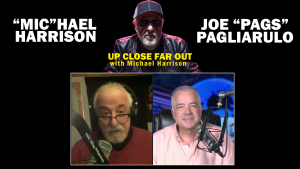
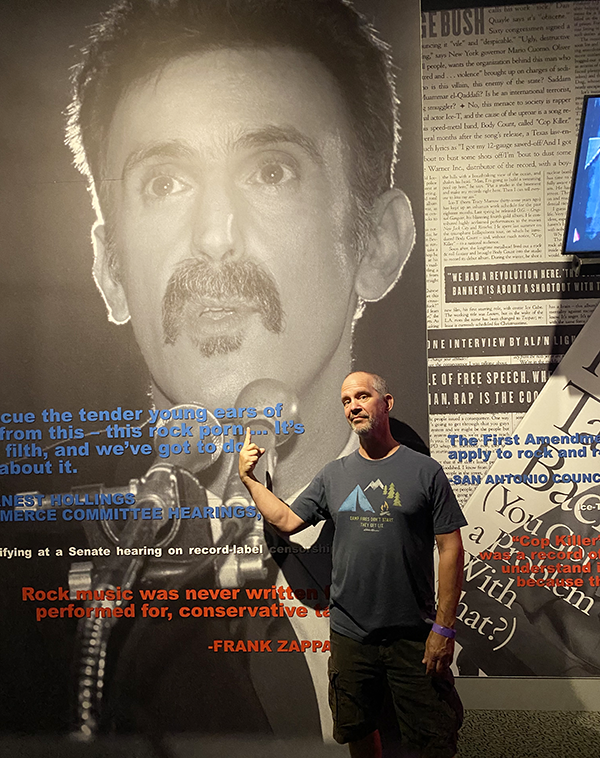
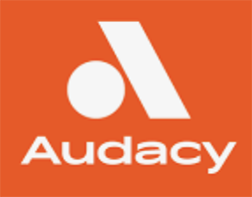 that partner with Audacy’s own sports talk stations. Some of the key takeaways from this study include: 1) Sports fans are 4x more likely to trust brands that support their teams; 2) Listeners are 4x more likely to catch a brand’s message on sports radio than on TV; 3) 73% of fans spend more time following their favorite teams on sports audio than sports-related digital media; and 4) Brands that advertise on Audacy sports stations enjoy a 40% lift in usage.
that partner with Audacy’s own sports talk stations. Some of the key takeaways from this study include: 1) Sports fans are 4x more likely to trust brands that support their teams; 2) Listeners are 4x more likely to catch a brand’s message on sports radio than on TV; 3) 73% of fans spend more time following their favorite teams on sports audio than sports-related digital media; and 4) Brands that advertise on Audacy sports stations enjoy a 40% lift in usage.  Wall Street investors do not put up money for traditional radio and television stations.
Wall Street investors do not put up money for traditional radio and television stations.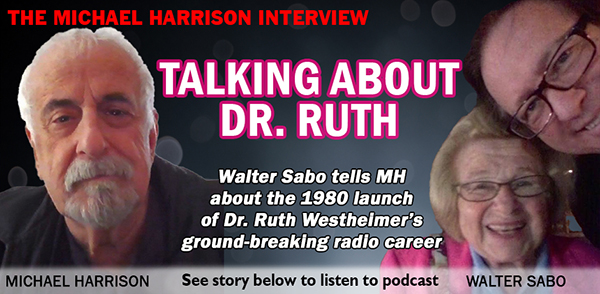
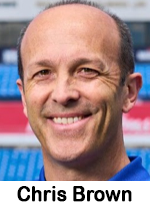 announcer last season, will continue as Bills Insider for the station, co-hosting “One Bills LIVE,” weekdays at 1:00 pm and simulcast on MSG Western New York. Audacy Buffalo SVP and market manager Tim Wenger says, “Chris is best suited to carry on the long tradition of informative, passionate and entertaining Bills play-by-play announcing. His decades-long knowledge of the organization will be invaluable as he assumes the play-by-play microphone.”
announcer last season, will continue as Bills Insider for the station, co-hosting “One Bills LIVE,” weekdays at 1:00 pm and simulcast on MSG Western New York. Audacy Buffalo SVP and market manager Tim Wenger says, “Chris is best suited to carry on the long tradition of informative, passionate and entertaining Bills play-by-play announcing. His decades-long knowledge of the organization will be invaluable as he assumes the play-by-play microphone.”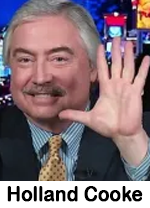 We – inside-the-box – live and breathe radio. Listeners have their hands full just living and breathing. Their day is time crunched and financially challenging, and we want to be its soundtrack.
We – inside-the-box – live and breathe radio. Listeners have their hands full just living and breathing. Their day is time crunched and financially challenging, and we want to be its soundtrack.
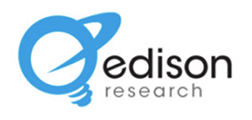 43% of spoken word listening, and podcasts 36%. Keep in mind that for Edison’s purposes spoken word content includes news, sports talk and play-by-play, audiobooks, talk shows, and “personalities.” Edison states, “Podcasting’s share of spoken word will almost surely surpass that of AM/FM within a few more years. There is one more thing to note – the advantage for AM/FM is coming entirely from those age 65 and older. Among those ages 13-64, podcasting has already passed AM/FM listening by, 41% to 39%. Meanwhile, among the oldest Americans age 65+, AM/FM radio continues to dominate, with a 66%-13% advantage. Curiously, that 66%-13% difference among the oldest Americans is the exact same difference we recorded for all Americans 13+ in 2017.”
43% of spoken word listening, and podcasts 36%. Keep in mind that for Edison’s purposes spoken word content includes news, sports talk and play-by-play, audiobooks, talk shows, and “personalities.” Edison states, “Podcasting’s share of spoken word will almost surely surpass that of AM/FM within a few more years. There is one more thing to note – the advantage for AM/FM is coming entirely from those age 65 and older. Among those ages 13-64, podcasting has already passed AM/FM listening by, 41% to 39%. Meanwhile, among the oldest Americans age 65+, AM/FM radio continues to dominate, with a 66%-13% advantage. Curiously, that 66%-13% difference among the oldest Americans is the exact same difference we recorded for all Americans 13+ in 2017.” Got young local radio news talent? CONGRATULATIONS, for five reasons:
Got young local radio news talent? CONGRATULATIONS, for five reasons:
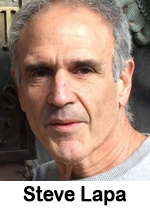 Almost everything I know about pricing strategy I learned from domestic airlines. Guess what? Airlines are at it again and I hope you are watching and learning.
Almost everything I know about pricing strategy I learned from domestic airlines. Guess what? Airlines are at it again and I hope you are watching and learning.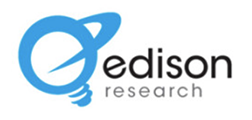 reach. “Republicans listen to more AM/FM radio than other groups, with an index of 109 (or 9% more listening than average). The ad-supported spoken-word channels on SiriusXM are a particularly efficient place to find Republicans, with an index of 146. Meanwhile, podcasts stand out as the more efficient platform for reaching Democrats, indexing at 121. And what about those elusive Independents, who often tip an election? Both streaming music, and in particular music videos on YouTube, over-deliver for these potential voters, with indexes of 103 and 123 respectively.” Edison adds, “Regardless of the party that buyers are trying to reach with political ads, audio stands out as a superior pathway to reaching voters. Audio provides enormous audiences and often a far less cluttered political environment than other ad channels.”
reach. “Republicans listen to more AM/FM radio than other groups, with an index of 109 (or 9% more listening than average). The ad-supported spoken-word channels on SiriusXM are a particularly efficient place to find Republicans, with an index of 146. Meanwhile, podcasts stand out as the more efficient platform for reaching Democrats, indexing at 121. And what about those elusive Independents, who often tip an election? Both streaming music, and in particular music videos on YouTube, over-deliver for these potential voters, with indexes of 103 and 123 respectively.” Edison adds, “Regardless of the party that buyers are trying to reach with political ads, audio stands out as a superior pathway to reaching voters. Audio provides enormous audiences and often a far less cluttered political environment than other ad channels.” What happened to us? Unless we move quickly, the radio business stands to lose the final frontier: in-car listening.
What happened to us? Unless we move quickly, the radio business stands to lose the final frontier: in-car listening. AI-generated content in political ads; 2) Proposing to apply the disclosure rules to both candidate and issue advertisements; 3) Requesting comment on a specific definition of AI-generated content, and 4) Proposing to apply the disclosure requirements to broadcasters and entities that engage in origination programming, including cable operators, satellite TV and radio providers and section 325(c) permittees. Chairwoman Jessica Rosenworcel says, “As
AI-generated content in political ads; 2) Proposing to apply the disclosure rules to both candidate and issue advertisements; 3) Requesting comment on a specific definition of AI-generated content, and 4) Proposing to apply the disclosure requirements to broadcasters and entities that engage in origination programming, including cable operators, satellite TV and radio providers and section 325(c) permittees. Chairwoman Jessica Rosenworcel says, “As  artificial intelligence tools become more accessible, the Commission wants to make sure consumers are fully informed when the technology is used. Today, I’ve shared with my colleagues a proposal that makes clear consumers have a right to know when AI tools are being used in the political ads they see, and I hope they swiftly act on this issue.” However, Republican Commissioner Brendan
artificial intelligence tools become more accessible, the Commission wants to make sure consumers are fully informed when the technology is used. Today, I’ve shared with my colleagues a proposal that makes clear consumers have a right to know when AI tools are being used in the political ads they see, and I hope they swiftly act on this issue.” However, Republican Commissioner Brendan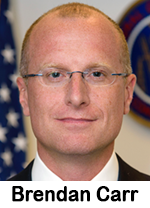 Carr opposes the move, saying, “There is no doubt that the increase in AI-generated political content presents complex questions, and there is bipartisan concern about the potential for misuse. But none of this vests the FCC with the authority it claims here. Indeed, the Federal Election Commission is actively considering these types of issues, and legislators in Congress are as well. But Congress has not given the FCC the type of freewheeling authority over these issues that would be necessary to turn this plan into law. And for good reason. The FCC can only muddy the waters. AI-generated political ads that run on broadcast TV will come with a government-mandated disclaimer but the exact same or similar ad that runs on a streaming service or social media site will not? Consumers don’t think about the content they consume through the lens of regulatory silos. They just view content on screens. Will they conclude that the absence of a government warning on an online ad means that the content must be real? I don’t see how this type of conflicting patchwork could end well. Unlike Congress, the FCC cannot adopt uniform rules.”
Carr opposes the move, saying, “There is no doubt that the increase in AI-generated political content presents complex questions, and there is bipartisan concern about the potential for misuse. But none of this vests the FCC with the authority it claims here. Indeed, the Federal Election Commission is actively considering these types of issues, and legislators in Congress are as well. But Congress has not given the FCC the type of freewheeling authority over these issues that would be necessary to turn this plan into law. And for good reason. The FCC can only muddy the waters. AI-generated political ads that run on broadcast TV will come with a government-mandated disclaimer but the exact same or similar ad that runs on a streaming service or social media site will not? Consumers don’t think about the content they consume through the lens of regulatory silos. They just view content on screens. Will they conclude that the absence of a government warning on an online ad means that the content must be real? I don’t see how this type of conflicting patchwork could end well. Unlike Congress, the FCC cannot adopt uniform rules.”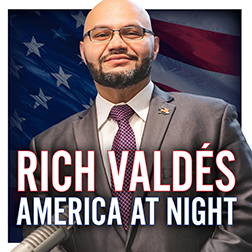 be able to alter the course of established radio stations and the marketplace of ideas before the 2024 election or even soon thereafter. Harrison told “America at Night” host Rich Valdés last night (5/22) that radio is far too idiosyncratic an industry – already run by too many people who don’t understand how it really operates – for someone (who also doesn’t really have first-hand experience in the field) to just step in and make drastic alterations to entrenched stations, formats, audiences and sponsors just to make a political statement. Harrison states, “There are more
be able to alter the course of established radio stations and the marketplace of ideas before the 2024 election or even soon thereafter. Harrison told “America at Night” host Rich Valdés last night (5/22) that radio is far too idiosyncratic an industry – already run by too many people who don’t understand how it really operates – for someone (who also doesn’t really have first-hand experience in the field) to just step in and make drastic alterations to entrenched stations, formats, audiences and sponsors just to make a political statement. Harrison states, “There are more 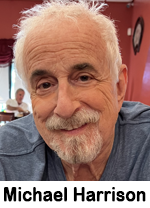 expedient uses of his money if that is his main purpose. After all, not all Audacy stations are conservative news/talkers… many are music, sports and a variety of formats. How inefficient such a move would be!” Harrison went on to say that radio is still an extremely powerful and potentially lucrative medium if only its present owners and operators believed in it and invested in its programming and marketing. He encouraged radio broadcasters to understand and believe in the “esthetic of ‘radio’ and not be so anxious to bail out into the utilitarian term ‘audio.’” Harrison and Valdés tied the discussion into the current news about the AM for Every Vehicle Act currently making its way through Congress stating that radio is still a lifeline for service to the community as a place for information, education, and entertainment and that eliminating it from automobile dashboards would be about “five to 10 years premature.”
expedient uses of his money if that is his main purpose. After all, not all Audacy stations are conservative news/talkers… many are music, sports and a variety of formats. How inefficient such a move would be!” Harrison went on to say that radio is still an extremely powerful and potentially lucrative medium if only its present owners and operators believed in it and invested in its programming and marketing. He encouraged radio broadcasters to understand and believe in the “esthetic of ‘radio’ and not be so anxious to bail out into the utilitarian term ‘audio.’” Harrison and Valdés tied the discussion into the current news about the AM for Every Vehicle Act currently making its way through Congress stating that radio is still a lifeline for service to the community as a place for information, education, and entertainment and that eliminating it from automobile dashboards would be about “five to 10 years premature.” 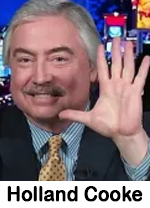 Because you can? Because you aren’t doing AM/FM radio? Because you are on radio, but can’t-do-there what you can-do podcasting? Because you are making money podcasting?
Because you can? Because you aren’t doing AM/FM radio? Because you are on radio, but can’t-do-there what you can-do podcasting? Because you are making money podcasting?
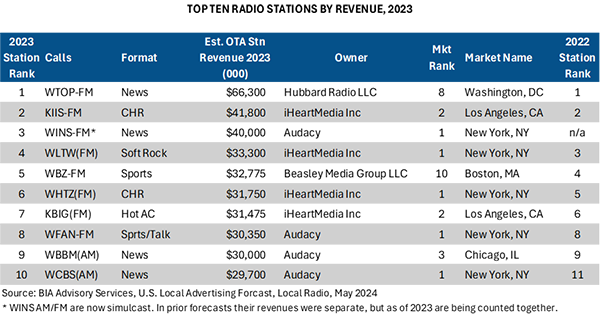
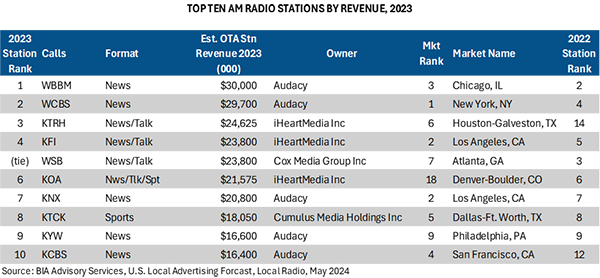
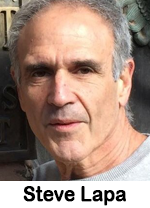 Does anyone care anymore?
Does anyone care anymore? When a new restaurant opens, smart owners put the phone on busy so would-be diners believe the joint is hot, packed and hard to get in to. At street fairs we are drawn to merchant booths with long lines. Crowds give us confidence.
When a new restaurant opens, smart owners put the phone on busy so would-be diners believe the joint is hot, packed and hard to get in to. At street fairs we are drawn to merchant booths with long lines. Crowds give us confidence.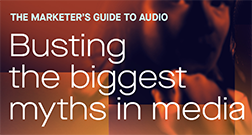 Audio advantage.” The guide provides data to counter prevailing myths that marketers often believe. Some examples include: 1) the notion that “apps have all the audience” is not true as “ad-supported platforms are key to marketer’s winning and Audacy’s 200 million+ is miles above Spotify (48.6M) and Pandora (41.2M)”; 2) “young people don’t listen to audio” isn’t true as 96% of Gen Z listen to audio daily – with 44% being daily radio users; and 3) “I can’t measure audio” is also false because marketers can “track, measure and analyze
Audio advantage.” The guide provides data to counter prevailing myths that marketers often believe. Some examples include: 1) the notion that “apps have all the audience” is not true as “ad-supported platforms are key to marketer’s winning and Audacy’s 200 million+ is miles above Spotify (48.6M) and Pandora (41.2M)”; 2) “young people don’t listen to audio” isn’t true as 96% of Gen Z listen to audio daily – with 44% being daily radio users; and 3) “I can’t measure audio” is also false because marketers can “track, measure and analyze 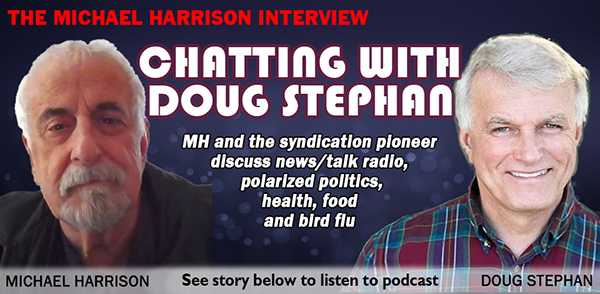
 daypart, starting Monday (5/6). KLIF program director Bruce Collins says, “We are extremely excited to add Brian Kilmeade to the 570 KLIF-AM/96.3 FM-HD2 weekday radio lineup, especially as we head into the election season. Brian will be talking each day to the movers and shakers in the political world, keeping DFW up to date. Together with Sean Hannity weekday afternoons from 4:00 pm to 7:00 pm, we have the national political scene more than covered.” Kilmeade comments, “I am thrilled to be joining a great station with a rich history like KLIF and enter the fourth biggest market in the country. I’m honored to be a part of this first-class lineup right in the middle of this historic election season, and in short order will be in Dallas to meet all the listeners in person!”
daypart, starting Monday (5/6). KLIF program director Bruce Collins says, “We are extremely excited to add Brian Kilmeade to the 570 KLIF-AM/96.3 FM-HD2 weekday radio lineup, especially as we head into the election season. Brian will be talking each day to the movers and shakers in the political world, keeping DFW up to date. Together with Sean Hannity weekday afternoons from 4:00 pm to 7:00 pm, we have the national political scene more than covered.” Kilmeade comments, “I am thrilled to be joining a great station with a rich history like KLIF and enter the fourth biggest market in the country. I’m honored to be a part of this first-class lineup right in the middle of this historic election season, and in short order will be in Dallas to meet all the listeners in person!”